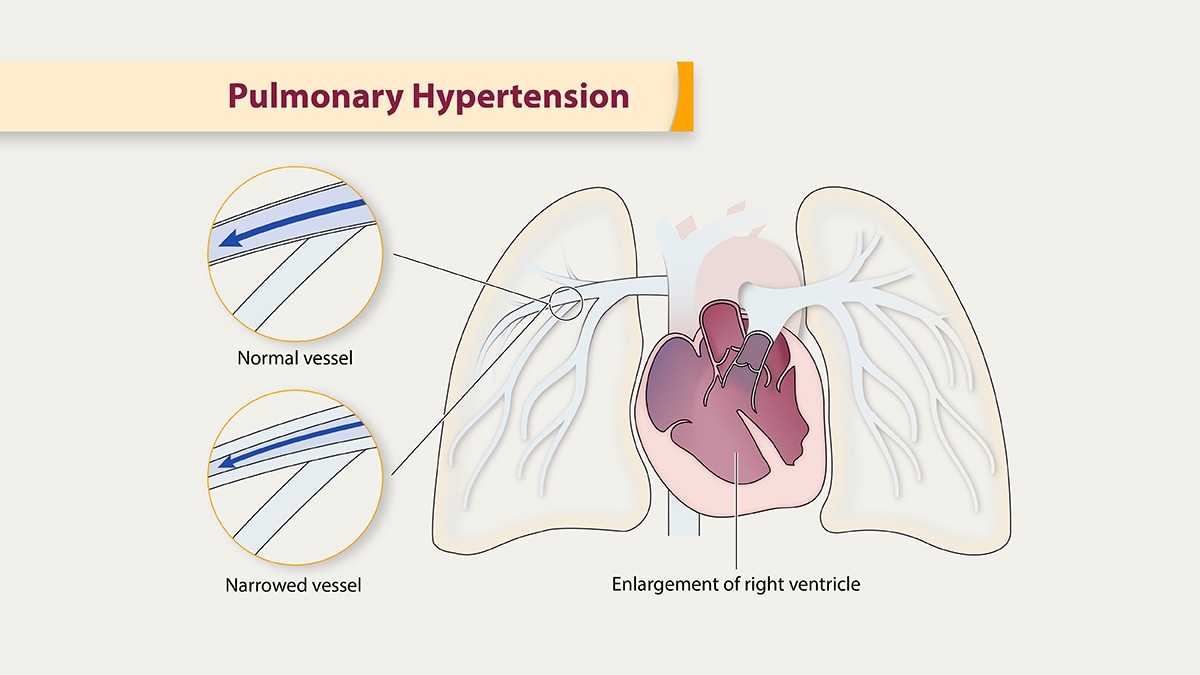Key points
- Pulmonary hypertension is a condition that affects the blood vessels in the lungs. It develops when the blood pressure in your lungs is higher than normal.
- The increased blood pressure in the lungs can make the heart work harder than normal to pump blood into the lungs. This can damage the heart and cause symptoms such as shortness of breath, chest pain, and lightheadedness.
What it is
With pulmonary hypertension, the blood vessels to the lungs develop an increased amount of muscle in the wall of the blood vessels. The heart pumps blood from the right ventricle to the lungs to get oxygen. Because the blood does not have to travel very far, the pressure in this side of the heart and in the artery taking blood from the right ventricle to the lungs is normally low—usually much lower than systolic or diastolic blood pressure.
When the pressure in this artery gets too high, the arteries in the lungs can narrow and then the blood does not flow as well as it should, resulting in less oxygen in the blood.1

Signs and symptoms
The symptoms of pulmonary hypertension during the initial stage of the disease are common to many other medical conditions (e.g., difficulty breathing, fatigue). This often results in a delayed diagnosis until more severe symptoms arise, such as:
Risk factors
Pulmonary hypertension happens at all ages, including among children, and its incidence increases with age.
Pulmonary hypertension is more common among women, non-Hispanic Black people, and people aged 75 or older.
Causes
Some common underlying causes of pulmonary hypertension include high blood pressure in the lungs' arteries due to some types of congenital heart disease, connective tissue disease, coronary artery disease, high blood pressure, liver disease (cirrhosis), blood clots to the lungs, and chronic lung diseases like emphysema. Genetics also play a role.
Pulmonary hypertension can happen in association with many other diseases, such as lung disease and heart disease. Heart failure is common in pulmonary hypertension.
Reducing risk
While not all pulmonary hypertension can be prevented, you can take steps to prevent it by making healthy lifestyle changes and managing high blood pressure, coronary heart disease, chronic liver disease, and chronic lung disease from tobacco use.
- George MG, Schieb L, Ayala C, Talwalkar A, Levant S. Pulmonary hypertension surveillance: United States, 2001 to 2010. Chest. 2014;146(2):476–495.
- Brown LM, Chen H, Halpern S, et al. Delay in recognition of pulmonary arterial hypertension: factors identified from the REAL Registry. Chest. 2011;140(1):19–26.
- Deaño RC, Glassner-Kolmin C, Rubenfire M, et al. Referral of patients with pulmonary hypertension diagnoses to tertiary pulmonary hypertension centers. JAMA Intern Med. 2013;173(10):887–893.
